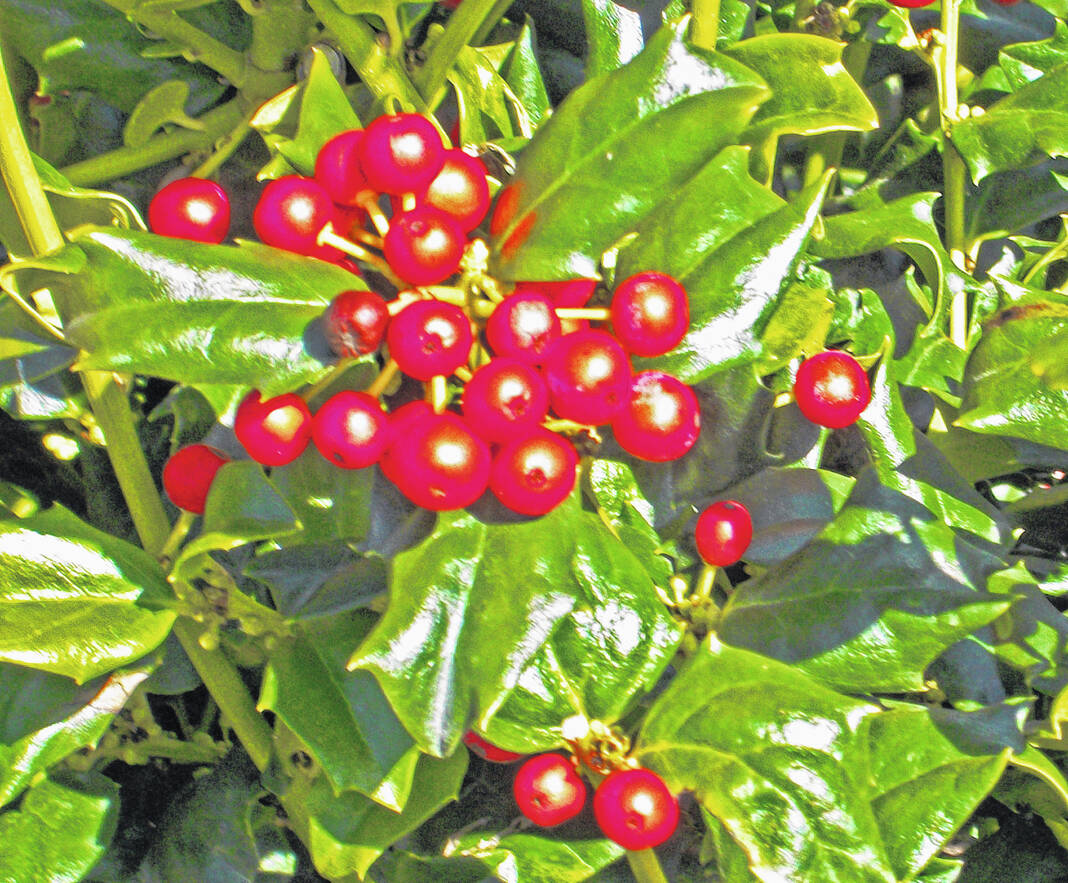

“China Girl” holly has glossy dark green foliage and produces showy berries if pollinated by “China Boy,” “Blue Boy” or “Blue Prince.”
Photo by GoodSeed Farm
Think about what a pleasure it would be to walk out into your garden next Christmas and gather an armful of festive holly branches for holiday decorating. We’ve all seen magnificent Holly shrubs and trees, loaded with fat, shiny red berries at Christmastime. It’s possible to grow your own Christmas greens, including holly, right in your home landscape. Hollies make very handsome and versatile landscape plants.
We’re often asked why some holly trees never get berries. We ask if the plant is male or female, and often our customers have no idea, so the answer to their question sort of suggests itself. Imagine a couple trying to raise offspring if they’re not sure what gender they are! Most hollies need the opposite sex of just the right variety for pollination.
Without a magnifying glass and a botany background it is hard to tell the male from the female plant (impossible if they’re not flowering). It is important to purchase hollies from a reputable nursery that is careful about plant labeling. To keep it simple we recommend buying hollies in pairs with one of each sex, which we like to think of as family planning.
One male holly can pollinate three or more females of a similar variety if they are within a hundred feet or so of each other. The happy couple must both be the same variety (ilex meserveae) China Boy/Girl, Blue Princess/Prince etc.). Less common are the Winterberry Holly (ilex verticillata), which lose their leaves in winter but are covered with berries for spectacular winter interest. You’ll need at least one male. “Southern Gentleman” pollinates “Sparkleberry” and “Winter Red” females. “Afterglow”, “Red Sprite” and Gold-fruited Winterberry prefer to mate with “Jim Dandy”.
To simplify all this, some nurseries offer patented varieties of Holly grown with one male and one female seedling in the same container, for the same cost as a single shrub. An example is “Berri-Magic” from Monrovia. With this holly you can plant only one and be guaranteed to have berries. It will also pollinate existing female hollies within 100 feet of where you plant it, so planting one might make a lovelorn female suddenly come alive in your yard.
Growing hollies successfully requires acid soil. We suggest adding Espoma “Holly Tone” fertilizer to the planting soil and then fertilizing every year with “Holly Tone”, and also using composted pine bark mulch. The real challenge is getting hollies to root successfully in heavy soils. This takes some time, so you have to make sure you deep-root water hollies occasionally for at least a year after planting. Evergreens dry out in winter just as in summer drought, so soaking them well in December is a good idea.
Hollies such as China Boy/Girl or Blue Prince/Princess make terrific foundation plants because they are willing to maintain virtually any shape and size from 4 feet to 10 feet with yearly shearing. Monrovia’s “Berri Magic” is a China Boy/girl combination. American Holly (Ilex fosterii or Ilex opaca) makes a terrific specimen tree, thriving in part shade and reaching a height of 30-40 feet while staying quite narrow. Burford Hollies are the most glossy, but need winter protection in the Ohio valley because they can’t tolerate extreme cold.
Steve Boehme is a landscape designer/installer specializing in landscape “makeovers”. “Let’s Grow” is published weekly; column archives are on the “Garden Advice” page at www.goodseedfarm.com. For more information is available at www.goodseedfarm.com or call GoodSeed Farm Landscapes at (937) 587-7021.

